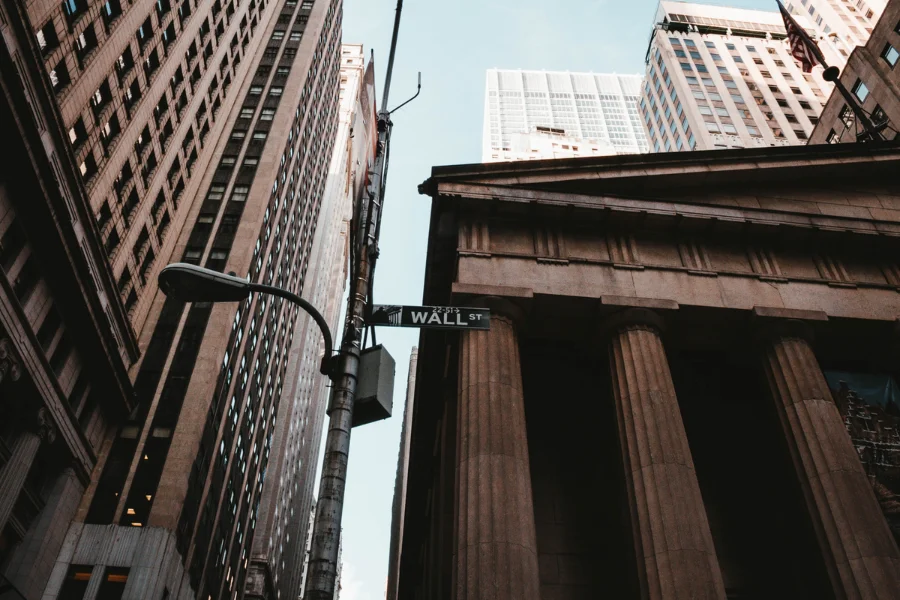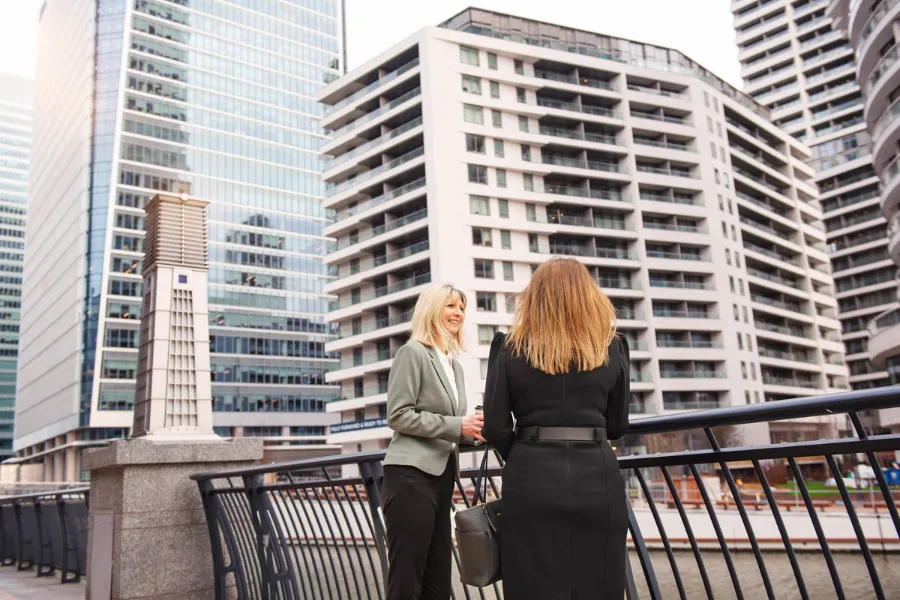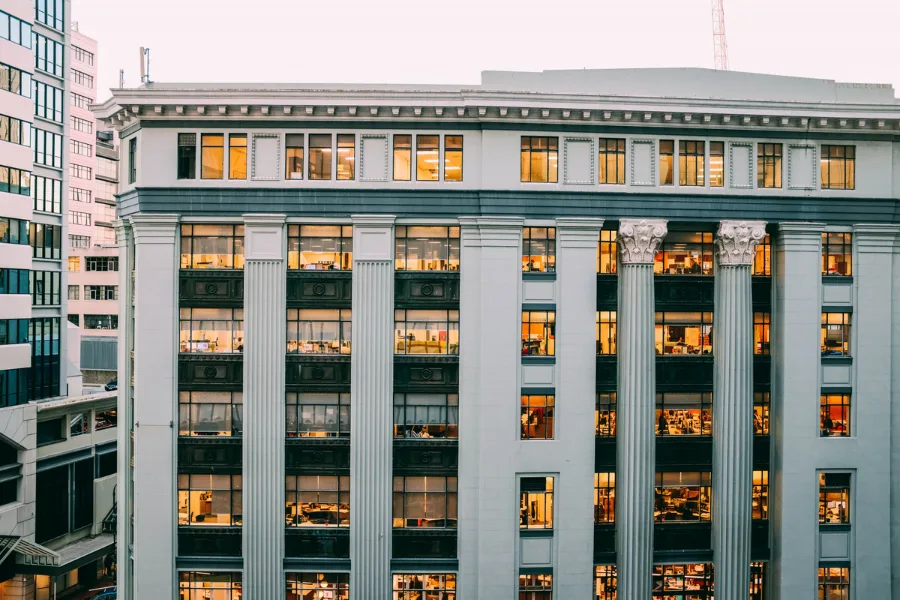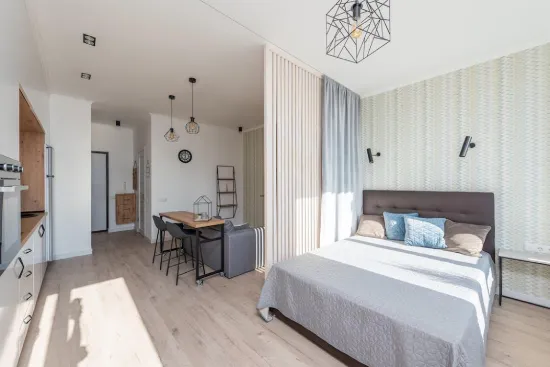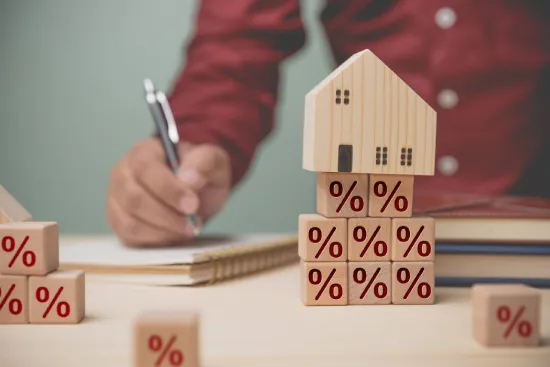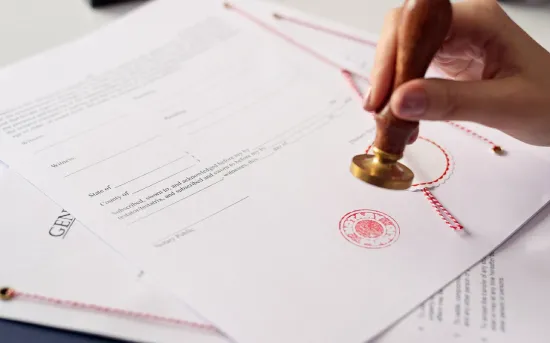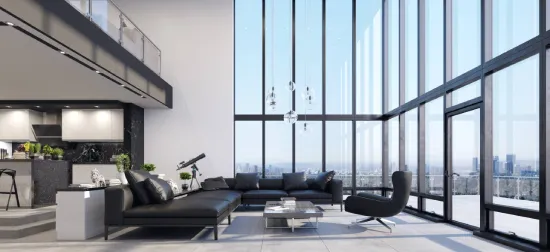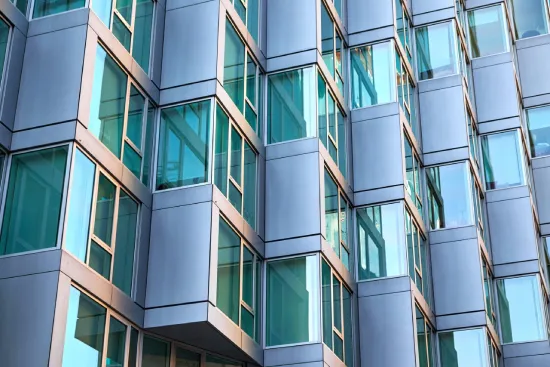What Is Brownstone?
Brownstone is a type of sandstone commonly used in construction. It’s not actually used in the structural part of the construction but rather in its veneer, exterior, or façade. The actual construction is usually brick. In NYC, brownstone refers to any townhouse or row house that uses this particular sandstone in the house’s exterior.
Brownstone was originally used as an affordable alternative to granite, marble, or limestone. And it allowed for a lot of flexibility (as a construction material) when building the façade for a brick-made townhouse or row house. The stone, in its original form, is pink, but it becomes brown when exposed to the air (hence the name). It became the material of choice for the façade between the 1840s and 1860s.
So brownstone refers to both the material and the townhouse / rowhouse that uses it in the exterior of the house.
Brownstone, Townhouse, and Rowhouse – What’s The Difference?
In NYC, the terms brownstone, townhouse, and rowhouse are used interchangeably to refer to both 1 or 2-family homes and multi-family homes. It’s important to understand what each of these terms means to better understand what brownstones are.
A one or two-family home/private residence is an official classification from a zoning and dwelling perspective. These are detached or connected houses (with neighboring structures) that have one or two residential units for one or two families.
A multifamily is classified as any home/property that has three or more residential units.
The townhouse is a relatively broad classification. It may refer to any one or two-family home and even most multi-family properties, whether it’s freestanding (with no other properties connected to it) or attached/connected to other homes on one or either side. A townhouse is basically the NYC version of single-family homes, though they also include multi-family homes here. A townhouse is what we may call a structural classification (not an official or recognized category).
Row houses are a specific type of townhouses that are built in a row and are connected to another house on at least one side. Most row houses are built the same way and share architectural similarities.
The broadest classification here is a townhouse, which may be a one or two-family home, a multi-family home, or a rowhouse. And any townhouse can be a brownstone. A brownstone is classified based on the construction material used in the façade but due to its widespread use in New York, especially in Brooklyn, it has become synonymous with the townhouse. Another way to say it is that every brownstone may be a townhouse but not all townhouses are technically brownstones. They may have brick, limestone, vinyl, or clapboard exterior.
Brownstone vs. Apartments
Whether you are renting, buying, or investing in a brownstone, it’s important to understand how they are different from apartments which are much more common in New York.
Cost
Brownstones are, in general, more expensive compared to apartments. A number of factors influence the cost, including the neighborhood, size, condition, age, features, etc. Well-preserved and restored brownstones have a certain character that appeals to the buyers, but it usually comes at a high cost.
Control
Brownstones offer you more control over your premises compared to apartments. In co-op apartments, you must seek board approval for most renovations, changes, and repairs. There might be more leeway in condos, but you still have to comply with the alteration rules the condo board might have. That’s not an issue when you own a brownstone. You will have to get the right permits from the Department of Buildings (DOB) and ensure that your neighbors are not disturbed, but otherwise, you can amend, change, or repair your property at will without any external entity interfering or impeding you.
Responsibility
Brownstones come with a higher degree of responsibility because you own the entirety of the structure (And everything within). If an apartment building’s roof needs to be replaced, the cost is split among all the apartment owners/tenants in the building. But if your brownstone’s roof needs repair or replacement, you will have to foot the entire bill yourself. The same goes for things like HVAC units, heaters, façade, etc. As a result, the cost of maintaining a brownstone can be quite high compared to the cost of maintaining an apartment (if you don’t include it in the monthlies). Renovations can become quite costly in a brownstone and more difficult if the brownstone is in a landmark district.
Carrying Costs and Taxes
Carrying costs or the money you need to spend on the property monthly on a monthly basis is different from apartments. On the one hand, you have no monthlies like co-op and condo maintenance fees/common charges, which can lower the carrying costs. But you also have to pay for every repair and maintenance-related expense yourself. If you spread the cost out over a year, it may be comparable to the monthly charges of an apartment. However, if the apartment you are comparing the brownstone to is a co-op and has a mortgage, the monthly carrying costs might be significantly higher. The insurance cost can be higher for a brownstone compared to an apartment.
Brownstones have an advantage when it comes to taxes, though it may change in the future (as a new bill has been proposed). Most brownstones fall in the Class-1 property tax bracket, which carries the highest property tax rate, but there are caps on how much the assessed value of the property can rise every year. Also, the assessed value is quite different from the property’s current market value. This usually results in brownstone owners paying less tax compared to apartment owners for the same amount of square footage they own.
Buying Process
If you are buying a condo apartment, the condo board cannot intercede or overrule the condo owner’s decision to sell their apartment to you unless they exercise their right to buy the apartment themselves. However, buying a co-op apartment in New York can be quite complicated as it’s not just between you and the seller, but the co-op board as well. Even if you have the money, you may not be considered financially stable enough to buy a co-op apartment by the board, and they may reject your application to buy the apartment. This is not an issue with brownstones. The owner of the property has complete control over their purchase decision and can sell the property to whomever they want. However, you may be required to pay a higher down payment if the brownstone has multiple residential units. You may also need an inspection and a thorough title search to ensure that no one else has any claim on the brownstone you are buying.
Amenities and Security
There are many apartment buildings that offer bare minimum amenities and have virtually no security. And some brownstones may be equipped with a lot of safety gear (cameras, sensors, smart locks, etc.) and may have access to community amenities like a swimming pool. But in most cases, an apartment is likely to have access to more amenities than a brownstone. And it may also be more secure, especially if it has a doorman and surveillance system. This extends to the safety of packages as well. In a brownstone, if a package is left on your doorstep, it could be vulnerable to theft. But in an apartment, the doorman or super can receive packages from you and ensure their safety.
Maintaining A Brownstone
One of the most important things you need to know about a brownstone (if you are planning on owning one) is how to keep it properly maintained. How time and cost-intensive the maintenance is will depend upon a number of factors, including the condition of the property and things like plumbing, wiring, heating, etc. You first need to decide whether you will maintain the brownstone yourself or outsource the task to someone else. There are a lot of service providers who offer monthly maintenance packages for brownstones. This includes both interior maintenance (checking the boiler, cleaning ducts, etc.) and exterior maintenance, which may include removing snow from the front of the house.
Other maintenance tasks include checking and cleaning the gutters, repairing leaks as soon as they are identified anywhere in the house (including the roof), insulating the house to keep heating costs low, and caulking.
Pros and Cons of Owning A Brownstone
Most of the pros and cons of owning a brownstone are covered in their comparison to apartments, but there are a few more things you need to know to be sure that they are the right choice for you in NYC.
Some of the pros of owning a brownstone are:
- A brownstone may come with private outdoor space, if not in front then on the roof, which you can turn into a garden.
- Brownstones usually have a character and charm that’s difficult to replicate in an apartment. A brownstone’s beautiful façade, an original fireplace, and classic windows enhance its historical value.
- Unlike apartments, where it’s easy to feel isolated, living in a brownstone can make you feel like you are part of a community.
- You may be able to Airbnbyour brownstone.
Some challenges associated with buying a brownstone and cons of owning a brownstone are:
- The closing costs are high. Since they are classified as real property, the mortgage recording tax applies, which can be quite significant.
- The brownstone housing stock is smaller, so finding the right property can be difficult. And you may be confined to certain neighborhoods.
- If the brownstone is old and hasn’t been properly restored in the recent past, it may develop problems quite frequently.
Some Challenges Associated With Owning A Brownstone In NYC
The three most common reasons to buy a brownstone in NYC are:
- As a primary residence (With you and your family occupying the entire structure).
- Rental property with you dwelling in one of the units.
- Rental property in which you are not living.
All three different arrangements have their own set of “situational challenges.” For example, when you are not dwelling in the brownstone yourself, you can’t directly keep an eye on the property and ensure that it’s not being abused. You may also not be able to keep an eye on small problems until they become major, like a small plumbing issue that grows and results in a flooded basement.
When you are on the property with your tenants, there might be other issues like noise. Many brownstones are not inherently built as rental properties, and the thin walls might result in a lot of noise and a lack of privacy. This will also make your property less desirable for tenants. You may need to make costly renovations to rectify the issue. Lack of privacy can be a significant downside if a brownstone is used as a rental property with multiple tenants. In addition to hearing each other, they are also usually in quite close proximity to one another.
Chimney and fireplace maintenance and repairs can also be a hassle. This can be a massive and sometimes costly undertaking. An improperly maintained fireplace can lead to accidents.
However, most of these challenges are associated with using a Brownstone as a rental property with multiple tenants. If you are occupying the brownstone or just one tenant is occupying the entire property, most of these challenges will be virtually non-existent.


